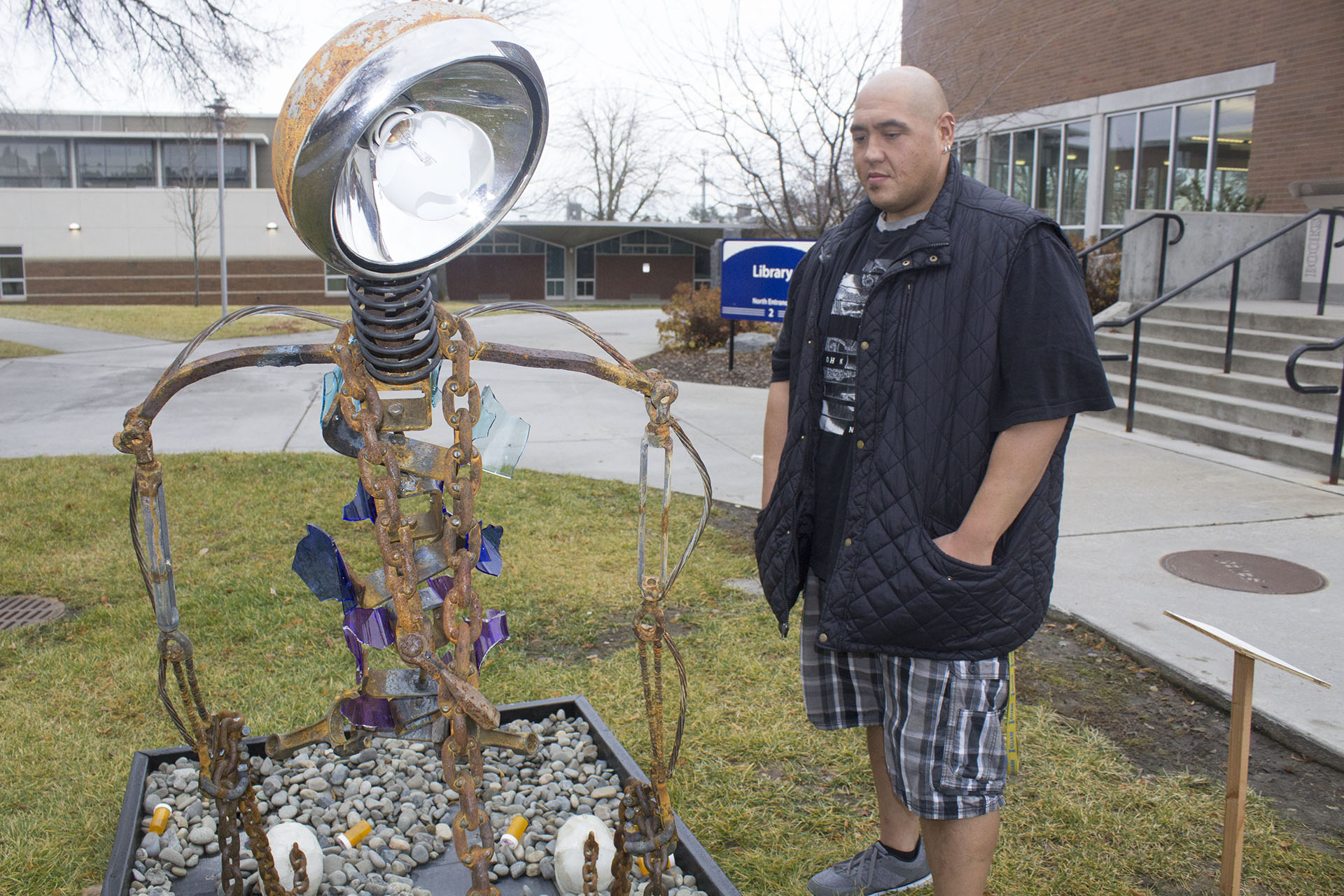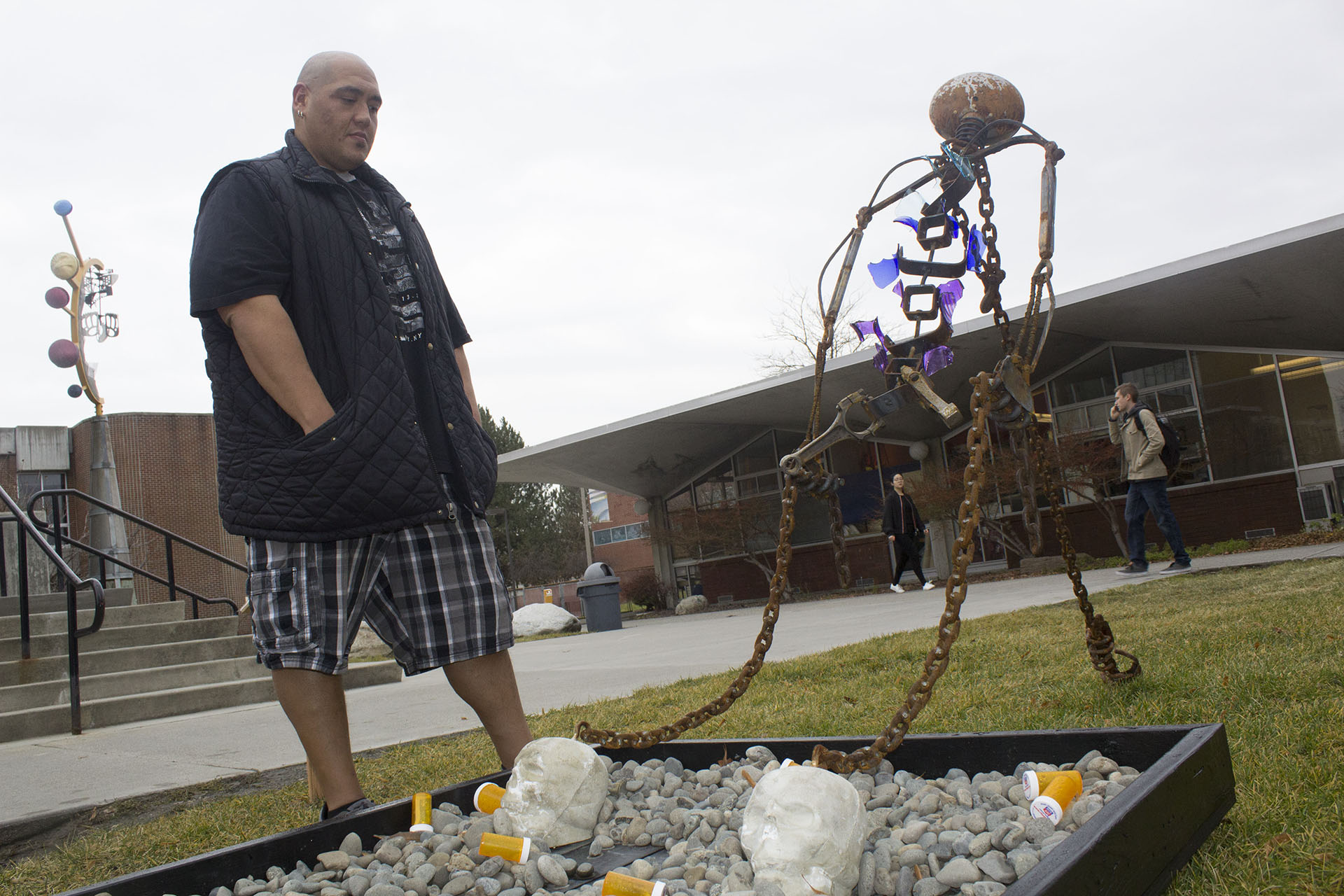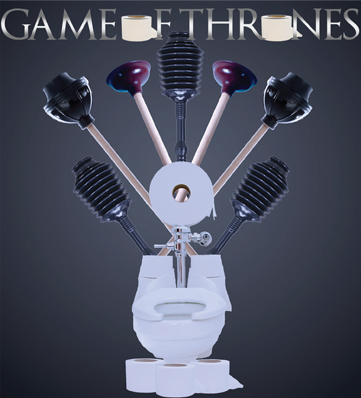Art instructor Rob McKirdie challenged students to create a conceptual self-portrait sculpture, using relevant objects that are found, instead of things that are made.
The sculpture had to be as tall as the artist and had to have objects of things that are self-representing, according to McKirdie. Students had to do some sort of cast element, like a cast of a hand. Casting is a several step melting process where a variety of objects are made.
Art Club President Nicholas DeCaro’s sculpture is a detailed self-portrait of his struggles in life.
“The broken glass represents the pain of being hit by a car and the struggles and burdens I carry on my back,” said DeCaro. “The skulls represent two things: my fiance and I were together 11 years. Then she and our daughter passed away. Aside from that, because of my back injury, I was on opioids, and I got addicted,” said DeCaro.

DeCaro admitted to losing a lot of friends to addiction.
The sculpture is titled, “Footprints,” according to DeCaro. It’s a play on a religious poem where a
someone is questioning God.
“There was only one set of footprints. I don’t understand why, when I needed You the most, You would
leave me.” Then God said, “It was then that I carried you,” (unknown author). For DeCaro, the footprints are question marks.
“Going through this has led me to question a lot of things about life,” said DeCaro. “The footprints are literally the skulls, to stress the burdens of carrying around the thoughts of addiction, my fiancé and daughter’s death, and having been arrested. Those question marks caused me to question myself, ‘Why did I go through this?’”
DeCaro used his sculpture as a social experiment.
The chain and hands in the front that are pulling down represent that while moving forward, one is
constantly pulled with temptation, selfishness, and greed.
DeCaro decided to put empty pill bottles on the base, and put dollar bills in the pill bottles, knowing that temptation would make people want to be selfish and greedy and take the money. In less than 24 hours it was all gone.
“So part of my social experiment was to show that we’re surrounded with selfishness and greed even in our own community,” said DeCaro. “The interesting part is after all the money was taken, there’s been a lot questions and controversy because of it.”

A few students came in and told the Secretary of the Art Department that they saw people taking money.
“It showed students with caring consideration,” said DeCaro. “The Music Department said they were thinking about putting money back into the pill bottles. I thought it was really interesting to hear, there’s that balance in life, good and bad.”
Artists try to communicate an idea to the viewer. McKirdie teaches skills, but also wants to link that with concept.
“I feel like a good way to teach conceptually is to talk about yourself,” said McKirdie. “You know a lot about yourself.”
Art is visual language.
“With Nick’s sculpture out there, you get this idea that it’s about distress, it’s about trauma, it’s about prescription, drugs,” said McKirdie. “As artists, you have to show what you’re representing, without any words.”
McKirdie teaches 3D design, drawing. He teaches bronze casting every other Spring Quarter.
“How we do bronze casting is we take wax and we embed it in plaster, a gauze bandage-like material,”
said McKirdie.
Then the wax is melted using a kiln, so that it flows out of solid plaster. Then the liquid bronze, cement or some other material is poured into the cavity. The bronze hardens. Then the plaster is taken off, and the bronze object remains.
“Most community college don’t have a bronze casting facility, so we’re pretty lucky to have that here,” said McKirdie.

